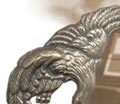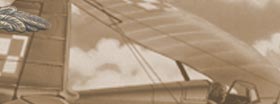The Norwegian Campaign
Narvik 9th April to 8th June 1940
Cliquez ici pour la version française
Popular belief holds that Denmark and Norway (Operation Weser¸bung) were invaded without warning on 9th April 1940. Hitler used the excuse for the need to create 'protectorates' from Soviet invasion rather than publicly divulge the strategic decision to deny the Allies an alternative foothold or 'jump-off point' into Europe. Hitler needed to protect convoy routes and deny the Allies an ability to encircle Germany. Both Royal families in Norway and Denmark were pro-British and although the Norwegian government was pacifist, claimed neutrality to avoid conflict. Vidkun Quisling's (Nasjonal Samling) collaboration with the Nazis worried intelligence chiefs and journalists alike that 'fifth columnists' could form part of the plan in the invasion of France (Stafford, 2000). The Germans needed to secure safe transport and convoy routes of steel from Sweden and keep access to the North Atlantic free. In any event, much 'activity' by the Allies was centred on the 'Phoney-War' (drôle de guerre) with the Allied High Command placing much faith on the Maginot Line in northern France to contain the real German threat.
The Norwegian Campaign from April to May 1940 was an opportunity for the Allies to redeem their lacklustre strategies both at diplomatic, political and military fronts. Indeed, Prime Minister Chamberlain (Turner, 1961 cited in Davies 2006) concluded Hitler had 'missed the bus' as the Allies sat pensively waiting. Overall, nine divisions had been earmarked for the campaign centred on naval and troop landings at Narvik (Davies, 2006). Denmark had fallen in a day. The Norwegian invasion by Germany had been a combined operation between the Kriegsmarine based in Bremarhaven, the Luftwaffe and the Wehrmacht supplying paratroopers and specialist Alpine troops from Austria. The invasion had set sail on the 6th April 1940 with the fleet heading for key ports of Trondheim, Bergen, Kristiansand and Narvik. In the Oslofjord the resistance was short but fierce with shore batteries sinking the Blücher (one of Germanyís most modern cruisers) with about half the invasion force on board and severely damaging the pocket battleship Lüzow. Paratroopers took the city of Oslo as the Luftwaffe bombed strategic targets, which paved the way for the completion of the invasion of southern Norway.
Battle Group 1 had set sail for Narvik consisting of ten German destroyers led by the flagship Wilhelm Heidkamp. On the morning 9th April the Germans landed troops on Ofotfjord and Herjangsfjord, which controlled access to Narvik and captured the supply base at Elvegaardsmoen. Spotted by the Norwegian navy, the Germans used the might of Wilhelm Heidkamp in a standoff to negotiate a peaceful outcome. Under the command of Captain Willoch, a small fleet of coastal defence ships blocked access to Narvik enabled the Norwegian destroyer Norge to prepare her guns and shore batteries to fire. Out-numbered and outgunned, the Norge was sunk along with the coastal defence ships.
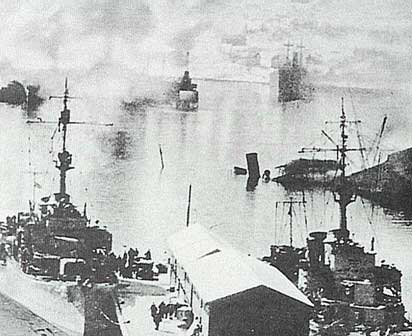 Narvik 1940
Narvik 1940
The Polish Contribution
On 23rd April 1940 Polish troops who had escaped from Poland and now attached to the French Armyís 13th Foreign Legion Demi-Brigade, began boarding at Brest as part of the French expeditionary force under the command of General Antoine BÈthouart. To fanfares and the playing of national anthems' Colombie, Clemenceau and Mexique headed up the Channel and into the North Sea.
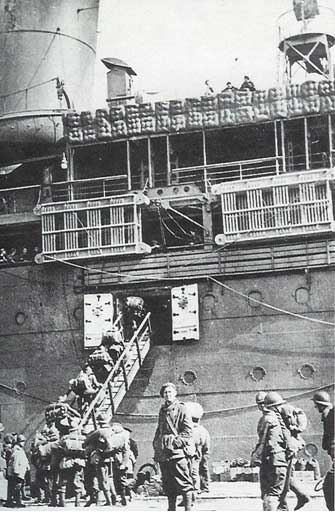 Brest 23rd April 1940
Brest 23rd April 1940
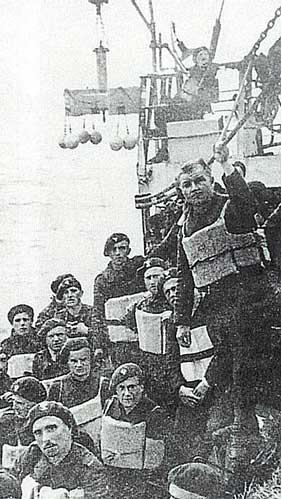 North Sea April 1940
North Sea April 1940
Battle commenced when ORP Orzel sunk the Rio de Janeiro in Oslofjord after shadowing the German ship laden with troops on 8th April 1940. Orzel surfaced at 11.12 hours some 1,200 meters from the suspicious Rio de Janeiro and ordered it to stop and be searched. On ignoring the order to launch a boat, machine gun fire prompted compliance, but once the order to abandon ship within fifteen minutes was given, the Orzel waited and after repeating the order, torpedoes were fired sinking the ship. Debris indicated military personnel were on board and the purpose was for the invasion of Norway.
At the first naval battle at Narvik, the Royal Navy had entrapped the German fleet that was low on fuel and ammunition. At the first engagement outside the harbour the Germans were surprised and the RN sank Wilhelm Heidkam and Anton Schmidt, leaving the Diether von Roeder heavily damaged. The garrison had been engaged with shelling from the fleet before leaving the fjord. While putting to sea, 3 German destroyers from Herjangsfjord under the command of Erich Bey engaged the fleet with further support from 2 more destroyers emerging from Ballangen Bay under the command of Commander Fritz Berger. British destroyers HMS Hardy and Hunter were sunk with HMS Hotspur severely damaged by a torpedo attack and before entering the North Sea managed to destroy supply and munitions shipping.
In the second naval battle, a flotilla of 9 destroyers and the aircraft carriers HMS Furious attempted to take advantage of the fuel and munitions shortage suffered by the Germans. On arriving on 13th April, the German forces were in poor shape. The second battle saw 3 German destroyers sunk by HMS Warspite with other ships scuttled or destroyed. The main Allied invasion was aimed at Narvik with the Norwegian's being pressurized to lend support overland through Bjørnefell. From 14th April the British forces landed 3 battalions and spread out to cover the fjord and approaches from the southwest at Nordland. The French Expeditionary forces landed on 28th April and were deployed at Ofotfjord with the Poles arriving on the 9th May 1940.
The command and co-ordination structure at Narvik was in the making of a disaster. Poor communication and control between the British, French and Norwegians meant a clear strategy for the invasion of Narvik was weak and divided. The options were for a seaborne assault or a more cautious overland attack. Delays and a slow response by the Allies had enabled the German garrison to improve their positions in readiness for the attack. While the Norwegians made good progress in their mountain campaign, French troops advanced up the Laberg valley with the British bogged down in Ofotfjord due to poor equipment and lack of training. Indeed, Major-General Mackesky advocated waiting until the snow melted.
The Polish Destroyer Division consisted of Burza, Blyskawica and Grom with the fleet being commanded by Komandor Porucznik S. Hryniewiecki had left Harwich via Scapa Flow for Norway escorting troop ships or in action off the Lofoten Islands and Narvik. On 3rd May Burza landed French alpine troops on Graatangend Fjord while Grom and Blyskawica shelled German positions. Sadly on 4th May Grom was sunk during a heavy air attack.
Eventually an amphibious attack led by the French Foreign Legion under the command of General Béthouart, was launched on 12th May with naval bombardments for support. Bjerkvik fell and the French marched towards Elvegardsmoen forcing the Germans to retreat. The Polish Independent Rifle Brigade had been in defensive and containment operations moved forward towards Bjerkvik but had become slowed by poor terrain. Poor communication and execution in plans allowed German ground forces to escape the encirclement. British and a large number of French troops had not been trained in mountain warfare and the cold became an enemy too with equipment inadequate for the terrain. Lack of landing craft and embarkation training made the operation hazardous and slowed re-enforcement of the troops on shore. Delays in establishing air support from Bardufoss and utilize the largely clear route north of Narvik hampered operations. When the Allied final assault began on 28th May via Rombaksfjord and Ankenes Narvik was allowed to fall. But it was a 'hollow victory'. As the Germans mounted greater pressure on the Norwegian forces in the Bodø, British High Command decided to organize a retreat and evacuation from this sector including Tromso.
A Hurricane Fighter squadron had arrived on 26th May to support the forces, but after an abortive attempt to base them at Skaanland were sent to the airfield at Bardu Foss to be with the Gloster Gladiator squadron and in effect rendered them ineffective.
British High Command had already decided to tactically withdraw with significant loss. On 3rd June 1940 German cipher traffic made a sudden upsurge. It indicated a substantial fleet of Kriegsmarine entering the Baltic from Kiel (Budiansky, 2000) with Germany determined to take Norway and once they controlled the skies, the landings at Narvik were doomed. The staged evacuation from Narvik was designed to minimize risk to the Norwegian forces north of Bjornefell where the 6th Norwegian Division comprising of 5 divisions held the border with Sweden. The decision to evacuate the Norwegian Government and Royal family was a major disappointment and realized their role would be reduced to stalling the German invasion, particularly along the coast from Bodø towards Narvik.
Narvik was secretly evacuated from 4th to 8th June due to mounting pressure upon the Allies to prop up the collapse of France and the urgent need for the fleet to support the evacuation of Dunkirk. The destroyers 'bussed' troops to the awaiting liners 112 Km off the Norwegian coast. The Independent Polish Rifle Brigade was evacuated on the night 4-5th June.
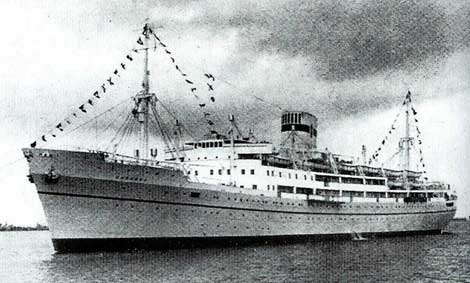 MV Chrobry a former Polish cruise liner was sunk on 14th May. She was ferrying British troops with valuable transport bound for Bodø. She sunk with eleven crew and an unknown number of troops drowned.
MV Chrobry a former Polish cruise liner was sunk on 14th May. She was ferrying British troops with valuable transport bound for Bodø. She sunk with eleven crew and an unknown number of troops drowned.
Both Burza and Blyskawica were sent south to France. ORP Burza was in action off Calais on 21st May shelling German troop concentrations in 'delay action' to cover troop withdrawals. Attacked by JU-87s Burza was hit and limped back to Dover before being sent to Plymouth for repairs.
The evacuation from Narvik and Dunkirk brought down the Chamberlain Government (Davies, 2006). Churchill (cited in Dickens, 1974:157) addressed the House of Commons of the key ship HMS Warspite:
'The craven and inept authorities at the Admiralty took the risk and were very much relieved to find that there were no special traps of one kind or another in the fjordsÖ. What would have been said if she had been sunk? 'Who was the madman who sent one of our most valuable ships into congested waters where she could easily fall prey?' If you dare and fail it is murder of your sailors. If you are prudent you are craven, cowardly, inept and timid'.
It is true a small naval flotilla annihilated a larger superior German navy and undoubtedly delayed an attempt to stage the invasion of Britain. However, there were recriminations as reported in the London Gazette on 8th July 1947 (No.38011)
Key findings were:
- The effective use of air power by the Germans to
- Support troops
- Low flying attacks
- Bombing
- Surprise landings of paratroopers
- Re-supply by air
- Compromised and curtailed ship to shore re-supply
- Allied issues
- Communication and control between ship and ground troops
- Lack of landing craft
- Poor air cover and support
- Inadequate provision for re-supply ship to shore
- Training
- Evaluation of the terrain
- Inability to fight independently
- Lack of automatic weapons
- Sheer weight of weapons and kit-load
- Wrong sized equipment or lacked specialization for conditions
- Poor control of the civilian population
Another measure of inept planning and strategic thinking was the return of Polish troops to France. The surviving of the Polish Independent Rifle Brigade (some times called the Polish Podhalanska Brigade) returned to France from the Arctic operation at Narvik. They landed in Brest on 13th June 1940 to find that despite crippling losses of the 1st Grenadier Division covering the allied retreat, the PIRB were ordered to reinforce a non-existent French Army defending Brittany. To the north along the coast at Dunkirk an armada of little ships rescued around 340,000 troops between 25th and 28th May 1940. The order to sacrifice a combat experienced brigade and render it ineffective at the fall of France remains one of gross stupidity and incompetence and thereby denied Great Britain a 'rich' resource for training less experienced infantry troops in field-craft being rapidly assembled to fill the losses incurred by the BEF.
Useful Resources:
British Pathé Search
Imperial War Museum - Collections Search
BBC History
1939 - 1947 The Polish Navy Homepage
Campaign Summaries of World War 2
|
